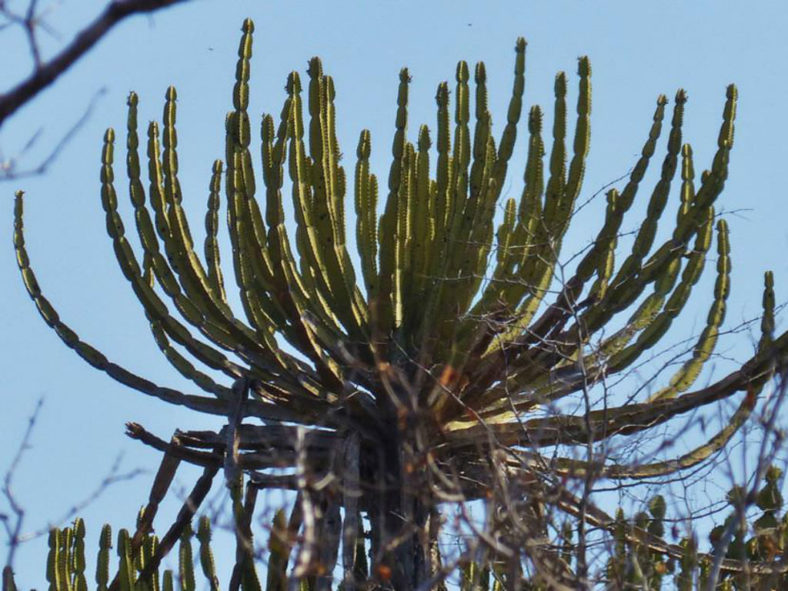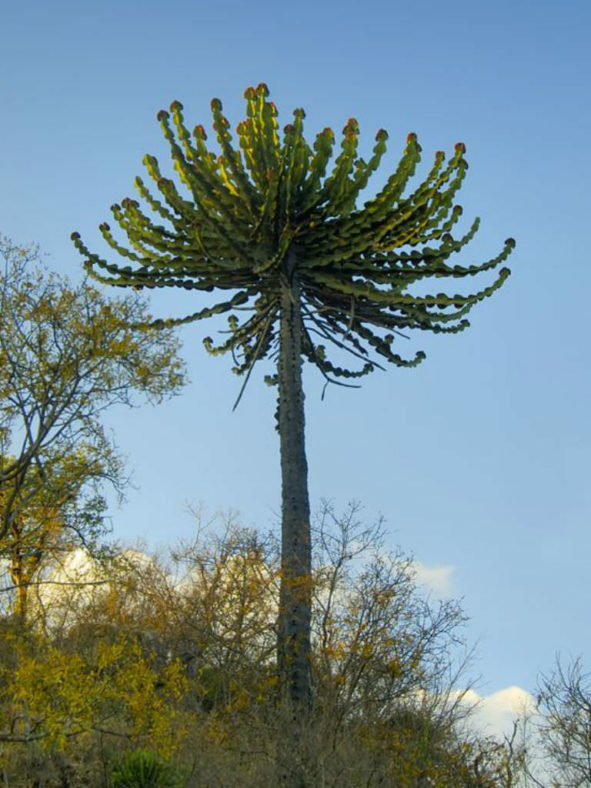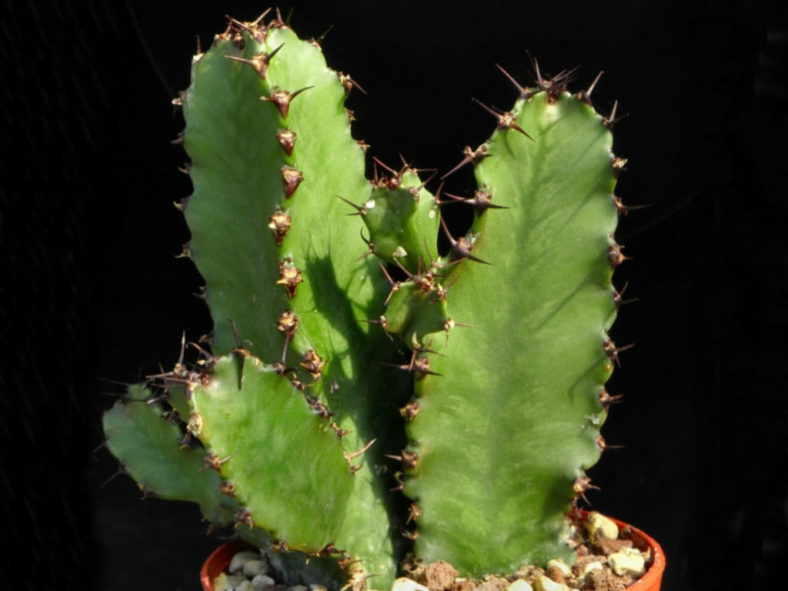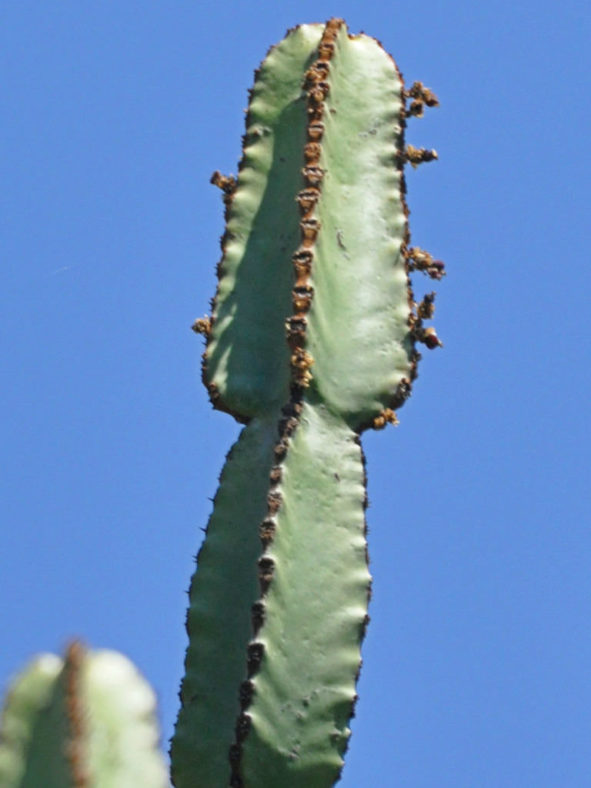Scientific Name
Euphorbia confinalis R.A.Dyer
Common Name(s)
Lebombo Euphorbia
Synonym(s)
Euphorbia confinalis subsp. confinalis
Scientific Classification
Family: Euphorbiaceae
Subfamily: Euphorbioideae
Tribe: Euphorbieae
Subtribe: Euphorbiinae
Genus: Euphorbia
Origin
Euphorbia confinalis is native to South Africa.
Description
Euphorbia confinalis is a spiny succulent tree with a trunk and a crown of curved, ascending branches. It can grow up to 31 feet (9.5 m) tall. The tunk is simple or with one to several main branches. The branches are segmented, 3- to 5-angled, pale green to blue-green, and can grow up to 5 feet (1.5 m) long and 2 inches (5 cm) thick. The segments of the branches can reach up to 8 inches (20 cm) in length. The spine shields are separate when young, later joined into a horny margin, and bear a pair of blackish spines. The spines can grow up to 0.5 inches (1.2 cm) long.
The small greenish-yellow flowers appear just above the spines in clusters of 3. The middle one is male, and the other two are bisexual.

Hardiness
USDA hardiness zones 10a to 11b: from 30 °F (−1.1 °C) to 50 °F (+10 °C).
How to Grow and Care
Euphorbias are very easy to care for. These plants require a little pampering to become established, but once they are, they are self-sufficient. More die from too much care and watering than from neglect. Euphorbias need well-draining soil and lots of sunlight. They are not particular about soil pH but cannot tolerate wet soil. Unlike most succulents, Euphorbia does not handle long periods of drought well. It may need weekly watering during the summer. Water whenever the soil is dry several inches below the surface. Water deeply, but don't let them sit in wet soil, which can cause root rot. Add some organic matter or fertilizer to the planting hole. Feed with a half-strength fertilizer monthly if you are growing them in containers or your soil is poor.
These succulents can be grown from seed, but they can be difficult to germinate (or even find). They are usually propagated by cuttings. This can be tricky because of the exuding sap. Rooting hormone is recommended with Euphorbias. They tend to grow problem-free, but a few pests and diseases are to be alert for.
Learn more at How to Grow and Care for Euphorbia.
Links
- Back to genus Euphorbia
- Succupedia: Browse succulents by Scientific Name, Common Name, Genus, Family, USDA Hardiness Zone, Origin, or cacti by Genus
Photo Gallery
Click on a photo to see a larger version.


